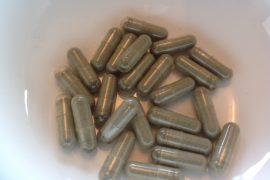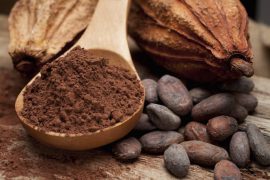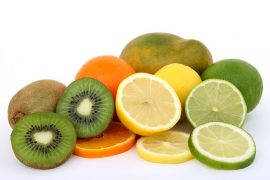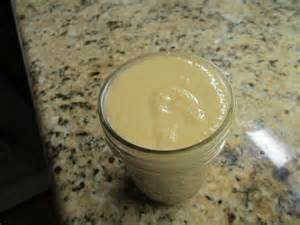People blame dandruff on a multitude of factors, such as dry skin, washing your hair too little or too often. There are two main reasons for dandruff the first is a fungus called Malassezia globose. This yeast like fungus is a common skin condition that can affect not only your scalp, but your eyebrows, beard or mustache. Dandruff can develop at any stage of life and appears as dry white flaky skin or as inflamed red areas on the skin.
If you are living with dandruff or another skin condition you may consider that it is the result of a nutritional deficiency. Dandruff can be the result of a fatty acid imbalance. The ideal ratio of omega 6 to omega 3 fats is 1:1. According to the University of Maryland Medical Center, the typical American diet tends to contain 14 to 25 times more omega-6 fatty acids than omega-3 fatty acids. Thousands of studies have documented omega 3 deficiency links to heart disease, cancer, diabetes, arthritis and brain function. Omega 3 deficiencies can also have an impact on your skin health. So in order to find the best option for your dandruff, you need to know the source of the problem.
Signs of fatty acid imbalance include:
Dry skin
Dry eyes
Dandruff
Soft Nails
Eczema
Allergies
Dry unmanageable hair
“Chicken” skin on back of arms
How does dandruff shampoo work?
Like any shampoo, dandruff shampoo washes the hair and scalp by removing pollutants, dirt and chemicals from products such as hair spray or gel and hair dye. (It’s important to keep in mind that use of the aforementioned products can actually make dandruff worse). As you massage your scalp you are also loosening scalp flakes which are rinsed away with the shampoo lather, which reduces the appearance of dandruff.
What’s in dandruff shampoo?
If your skin is irritated you may want to look at environmental factors such as the types of hair products you are using. It’s important to remember that what you put on your skin and scalp ends up in your bloodstream and can have a negative impact on your health. Many commercially made shampoos contain ingredients that are hazardous to your health, so before you lather up, check your shampoo label. I recommend “Skin Deep” the database created by the Environmental Working Group.
You can check this website to see a current list of ingredients in Head and Shoulders shampoo. I’ll only mention a few of the ingredients and their concerns.
Sodium Lauryl Sulphate (SLS) : SLS is a detergent and a surfactant used to break down surface tension allowing the shampoo to become a more effective cleanser. SLS is also linked to Nitrosamines a potent carcinogen that causes your body to absorb nitrates, another known carcinogen. Over 40,000 studies in the PubMed science library include information on the toxicity of this chemical.
Sodium Laureth Sulphate (SLES) : SLES is a concern as it can become contaminated with Dioxane during the manufacturing process. Dioxane is a suspected carcinogen. Because the liver has a difficult time metabolizing this effectively, it remains in the body for an extended period of time.
Fragrance: Artificial fragrances can contain hundreds, even thousands of chemicals, including phthalates. Since fragrances are protected as a trade secret, the full ingredients do not have to be listed on the label. Fragrances are a major cause of allergic reactions.
Methylchloroisothiazolinone: According to Skin Deep, this widely used preservative is associated with allergic reactions and there is also some cancer concern.
Cocamidopropyl Betaine- (CAPB) According to PubMed, the increasing rates of sensitization led to CAPB’s being named Allergen of the Year in 2004. EWG Skin Deep lists this as a low to moderate overall hazard, associated with irritation and allergic contact dermatitis.
Methylisothiazolinone– According to Skin Deep, this widely used preservative is associated with allergic reactions, skin, eye and lung irritations and studies on the brain cells of animals show it may be neurotoxic.
Make your own anti-dandruff shampoo
Rather than using commercially made products with can add to your body’s toxic burden, consider making your own anti dandruff shampoos at home using products from your pantry.
Since the dandruff comes from your scalp it is important to gently massage any dandruff remedy into the scalp, as well as thoroughly washing your hair afterwards. Coconut oil is a wonderful option as it is naturally antifungal and will also help to moisturize your scalp.
Coconut oil is nourishing for your scalp and because the oil is a natural antifungal, coconut oil can offer relief from dandruff conditions. With regular use, coconut oil can kill the fungus on the scalp and dandruff issues can be eliminated.
Simple coconut oil recipes
- Plain coconut oil- Wash and dry your hair as usual (no conditioners). Melt and warm plain coconut oil. Using room temperature oil, apply the oil to the scalp being sure to gently massage the scalp. Wrap your head with a towel and allow the oil to remain on your scalp for 20-30 minutes. Wash and dry your hair as usual. Continue this process weekly to help control dandruff.
- Coconut oil with fenugreek-This seed has antifungal and antibacterial properties. It is also is rich in amino acids and proteins and has a high concentration of emollients which help to strengthen hair. Simply crush a tablespoon of fenugreek seeds, (an electric herb grinder works well for this). Add to 5 tablespoons of melted coconut oil. When oil is at room temperature apply to the scalp and massage gently. Wrap your head with a towel, allow it to sit for an hour and wash and dry as usual.
Additional options for dandruff
Rosemary-This oil has antifungal properties. You can add a few drops to your shampoo as you normally wash your hair.
Tea tree oil-This oil also has antifungal properties, you can simply add a few drops to your shampoo as you normally wash your hair.
Apple Cider Vinegar– Mix a quarter cup apple cider vinegar (ACV) with a quarter cup water in a spray bottle and spray on your scalp. Be careful to avoid your face and eyes. Wrap your head in a towel and let the ACV sit for 15 minutes to an hour, then wash your hair as usual. Do this twice a week. The ACV changes the pH of the skin, so if your dandruff is caused by a fungal infection, the pH change is no longer an ideal environment for yeast to grow.
Aspirin-Pure aspirin contains salicylic acid (an active ingredient in many dandruff shampoos). It has antimicrobial and fungicidal properties which can help to get rid of dandruff as well as help with the inflamed skin that individuals with severe dandruff may experience. Crush two pure aspirin tablets into a powder and add to a small amount of shampoo before use. Gently massage the scalp and leave on for two minutes before rinsing.
Dandruff may seem like an ongoing battle, but there are many ways to manage it, lessen the severity of it and hopefully remove the problem completely. Many of these methods as you can see, do not involve harsh chemicals which can add to the body’s toxic burden. So take a look in your pantry and give some of these items a try. As always, before trying a full wash, consider doing a patch test to avoid any potential allergic reactions or discomfort.
References:
EWG Skin Deep Cosmetics Data Base
A Consumer’s Dictionary of Cosmetic Ingredients, Ruth Winter, M.S. Sixth Edition 2005








